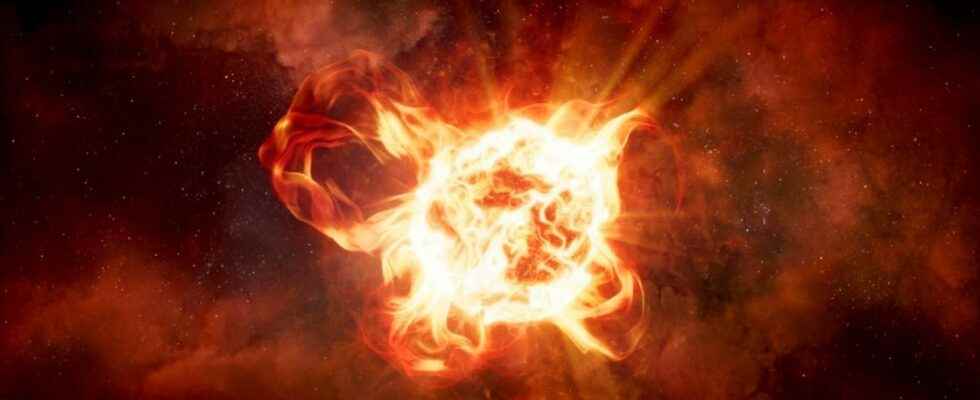Betelgeuse is one of those astronomers call hypergiant stars. And a few months ago, they thought they were in the front row of his end of life. Lack. So they turned to another hypergiant star, “a Betelgeuse on steroids”to try to unravel the mysteries of the death of these stellar watches.
Remember. It was late 2019, early 2020. Betelgeuse, one of the brightest stars of our sky, had dramatically lost its brightnesswithout the astronomers understand why. They once thought we were about to witness the death of thesupergiant star. At the beginning of its supernova explosion. But it was not. Betelgeuse has finally regained its luster.
And the stars supergiants have continued to keep a part of the secret, which researchers at the University of Arizona (United States) hope to lift thanks to a three-dimensional image of a hypergiant star. An image that reveals the processes that accompany the death of these extraordinary objects.
Of hypergiant stars, there are only a few. Only a few in the vastness of our Milky Way. Betelgeuse is one of them. V.Y. Canis Majoris (VY CMa) is another. As its name suggests, it is located in the constellation of the Great Dogto just over 3,000 light years of our Earth. Its diameter is about 10 to 15,000 times the Earth-Sun distance. It could be the most massive star of the Milky Way. “Like a Betelgeuse under steroids »comments LucyZiurys, researcher, in a statement from the university of arizona.
No supernova for hypergiant stars?
It is these extraordinary characteristics that have prompted astronomers to look into the case of V.Y. Canis Majoris. With the aim of verifying whether these star monsters actually evolve into supernovae. “If that were the case, we should see a lot more supernovae in the sky”, says Lucy Ziurys. That’s why researchers believe that at least some might just quietly collapse into black holes .
Unlike less massive stars, hypergiant stars tend to experience loss of masssubstantial and sporadic which form complex and very irregular structures. Kinds of arches, tufts or knots . To learn a little more about VY CMa and how she loses mass – this had been confirmed by observations of the Hubble Space Telescope in particular -, the astronomers traced, thanks to the data of the Large array of millimeter/submillimeter antennas of the Atacama (Chile), certain molecules – the dioxide of sulfur (NA2), the oxide of silicon (SiO) or the chloride of sodium (NaCl) – ejected from the surface of the star. By moving Alma’s antennas, they were even able to obtain very detailed information on the directions and gearsmovement of these molecules.
The researchers then superimposed the whole thing on pre-existing images of the dust surrounding V.Y. Canis Majoris. And what they observed, it is indeed not a loss of symmetrical mass, but many cells of convection. Like giant balls ejected in different directions. “A bit like the coronal arcs that we observe on our Sun. But a billion times bigger”concludes Lucy Ziurys.
Interested in what you just read?
